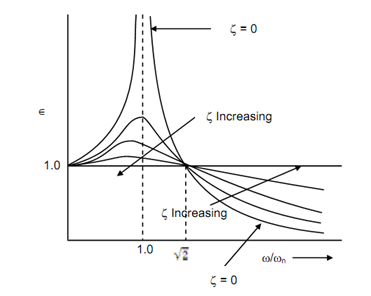Something just occurred to me that I should have caught at the start. You said you were doing a shock analysis, so I assumed you were using the Dynamic Shock in Creo. However, you said you were adjusting the damping ratio value in Creo, which is something you can't do in a Dynamic Shock (since a Dynamic Shock uses the Response Spectrum Method, which has the damping accounted for in the curve). I assume that you're doing a Dynamic Time analysis in Creo, correct? That being said, if you are doing a Dynamic Time analysis in Creo, then what did you define as your input? Creo's Dynamic Time can only take an acceleration curve/table as an input for base excitation, but in ANSYS you're essentially using a displacement curve/table with your displacement constraint. However, assuming you've set up both analyses correctly and that your mesh for each is such that you have accurate results, the difference between the two might be because your system is very nonlinear. It might be worth your time to make a simple model (say a SDOF system) that you know linear superposition is valid for, and solve it using the same methodology in each package and compare the results.
[highlight #FCE94F]"I expect the shock profile (accel time) to reduce in amplitude and widen as it moves through the structure and springs. I am finding however that the attenuation of shock through the assembly is not as expected and that in some structures the acceleration value increases as if energy is being added."[/highlight]
Hmmm, wouldn't that depend on the nature of the structure? The wave speed through a structure depends on the local stiffness and mass, so the wave speed could increase or decrease depending on the specific characteristics of the structure. For example, image you have three springs of the same length and mass, but different stiffness, where the first spring has a lower stiffness compared to the second spring, and the third spring has a lower stiffness compared to the first spring. If you gave an impulse to the free end of the first spring, you'd see a wave travel through the first spring at some speed v1. However, once the wave reaches the end of the first spring and passes into the second (stiffer) spring, you'd see the wave speed up and travel at some velocity v2. Finally, when the wave reach the end of the second spring and passes into the third spring, you'd see the wave slow down and travel at some velocity v3. You'd have the relation: v2 > v1 > v3.
[highlight #FCE94F]"One other interesting thing is that where I would expect to see a time lag between the response of two components I see no lag at all, both structures react at the same time (my time steps are small enough at 0.1ms), this may be due to the fact that there is a very stiff spring between these but I still expected some attenuation."
[/highlight]
Is this in your ANSYS or Creo analysis? If it's in the Creo analysis, and you're doing a Dynamic Time analysis, what are your setting under the "Output" tab? Can you post a screen shot? If it's your ANSYS analysis, have you made sure to construct a proper mesh? I don't have much experience with explicit dynamics, but I do know that mesh is much more important in explicit integration compared to implicit. Furthermore, you critical time step is very important as well, and having a critical time step that is either too larger or too small can result in a poor simulation.

